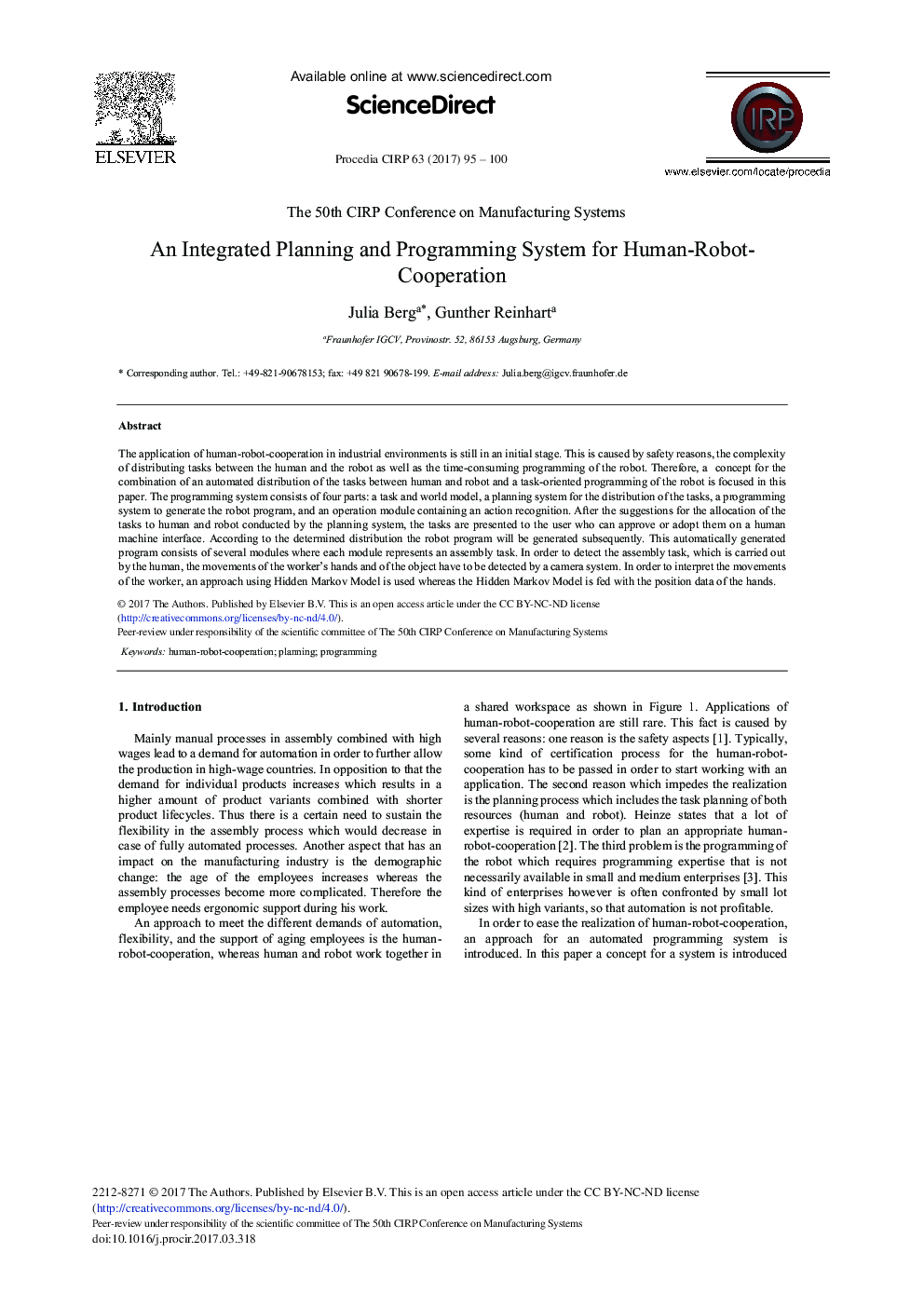| Article ID | Journal | Published Year | Pages | File Type |
|---|---|---|---|---|
| 5470130 | Procedia CIRP | 2017 | 6 Pages |
Abstract
The application of human-robot-cooperation in industrial environments is still in an initial stage. This is caused by safety reasons, the complexity of distributing tasks between the human and the robot as well as the time-consuming programming of the robot. Therefore, a concept for the combination of an automated distribution of the tasks between human and robot and a task-oriented programming of the robot is focused in this paper. The programming system consists of four parts: a task and world model, a planning system for the distribution of the tasks, a programming system to generate the robot program, and an operation module containing an action recognition. After the suggestions for the allocation of the tasks to human and robot conducted by the planning system, the tasks are presented to the user who can approve or adopt them on a human machine interface. According to the determined distribution the robot program will be generated subsequently. This automatically generated program consists of several modules where each module represents an assembly task. In order to detect the assembly task, which is carried out by the human, the movements of the worker's hands and of the object have to be detected by a camera system. In order to interpret the movements of the worker, an approach using Hidden Markov Model is used whereas the Hidden Markov Model is fed with the position data of the hands.
Keywords
Related Topics
Physical Sciences and Engineering
Engineering
Industrial and Manufacturing Engineering
Authors
Julia Berg, Gunther Reinhart,
